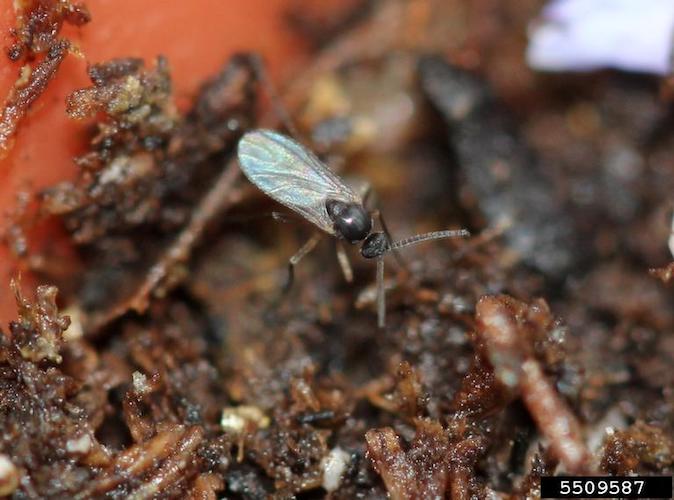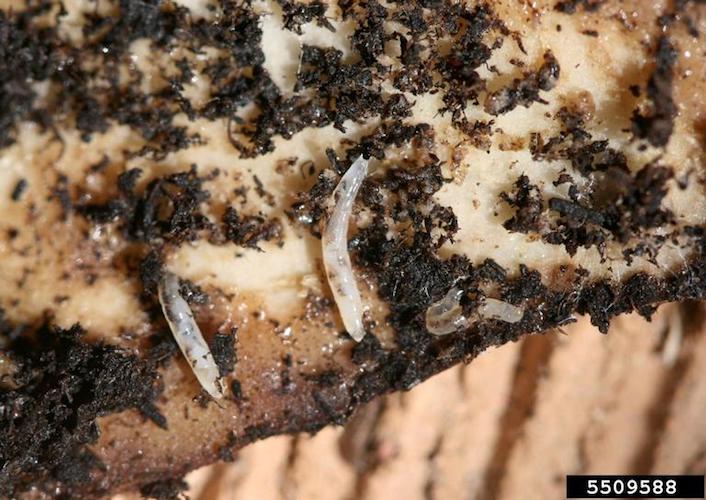
Fungus gnats
WHAT IT IS AND HOW TO ELIMINATE
Plantas decorativas de jardín y/o interior
Fungus gnats
Mycetophyllids
Pathogen:
Insect
Type:
Risk to the plant:
INTERMEDIATE
Mosquitos de los hongos

WHO CAUSES IT?
Mycetophilids, commonly known as fungus gnats, are small diptera with a dark body and long legs that live in humid environments rich in organic matter. Its presence is common in poorly drained substrates, especially in greenhouse crops or indoor pots. The adults, which live only a few days, feed mainly on nectar and do not cause direct damage to the plants, but the females lay their eggs in the moist substrate, where thin, white larvae hatch. These larvae are saprophagous, feeding on decomposing organic matter, although they can also attack fine roots of young plants when population density is high. The larvae go through several stages before pupating in the substrate and emerging as adults. Under favorable humidity and temperature conditions, development from egg to adult can be completed in less than two weeks, allowing multiple generations per year and rapid expansion in confined spaces or with little substrate renewal.
SYMPTOMS
Fungus gnats affect plants mainly through the action of their larvae, which damage the root system when the number of individuals is high. The weakening of the roots prevents proper absorption of water and nutrients, which translates into visible symptoms at the foliar level. In addition, damage to the roots facilitates the entry of secondary pathogens such as Pythium or Fusarium.
- Yellowing of young leaves
- Daytime wilting, with partial nighttime recovery
- Reduction in general plant growth
- Appearance of leaf spots due to water stress
- Root rot in seedlings or cuttings
- Premature leaf fall
- Presence of small flying insects when moving the pots


DEVELOPMENT CONDITIONS
Temperature:
18 °C – 26 °C
Humidity:
65 % – 90 %
HOW IS IT SPREAD?
Contaminated substrate, Infested pots, Cultivation tools, Irrigation water, Movement of plants between spaces
HOW TO ELIMINATE IT?
Home treatments
Natural allies
There are no natural allies
Chemical treatments
RECOMMENDED PRODUCTS TO ELIMINATE THE PEST
PLANTAS REPELENTES
-
RECOMMENDATIONS
- Avoid excess watering; Let the top layer of the substrate dry between watering.
- Use well-aerated soil with good drainage.
- Place a layer of sand or perlite on the substrate to prevent the larvae from climbing.
- Use yellow sticky traps to catch adults.
- Apply cinnamon powder directly to the soil or substrate.
- Do not leave remains of leaves or organic matter on the surface.
- If the problem persists, apply biological products such as Bacillus thuringiensis or beneficial nematodes.

















